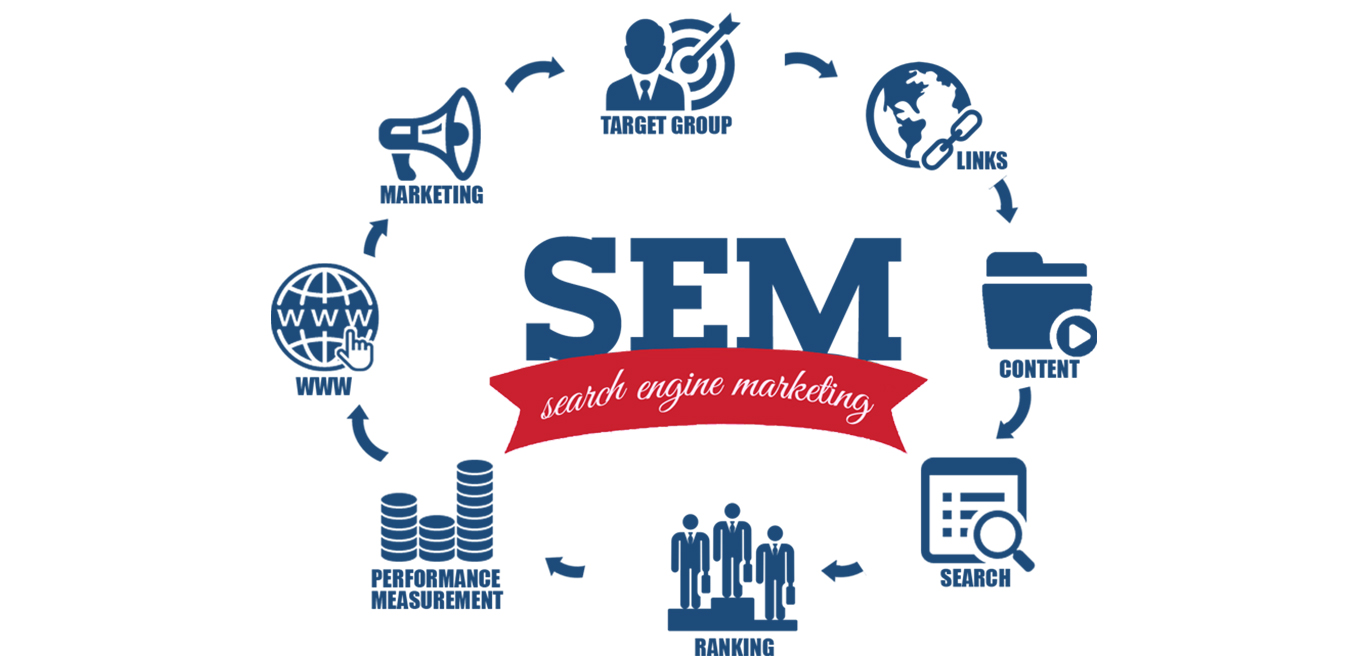The job of a search engine marketing strategy is to tailor paid ads to achieve a goal. In order to develop a solid strategy, you need to understand how paid ad platforms work and how you can control variables that affect the performance of your ad campaigns, such as keywords, budget, and ad text. Here are the factors that are most closely related to your success in search engine marketing:
1. Keyword Intent
This step is arguably the most important of the entire advertising campaign because it lays the foundation for the success of all your subsequent efforts.
Your chosen keywords will determine how easy it will be for your potential customers to find you and how valuable and relevant your ad will be to them.
Some keywords have better performance and results than others, along with other differences such as the amount of competition in the market and the price of Pay-Per-Click (PPC), so you need to do a thorough search for the most popular keywords in the area in which you compete. The Pay-Per-Click (PPC) strategy relies on comprehensive research in order to choose the right keywords to bid on, i.e., the categories you want your ad to appear in. Start by brainstorming and making an inventory of all the phrases and words that describe your product or even your competitors.
Of course, there are many tools that will make this task easier for you, and among the most important of these tools is the wonderful Google Keyword Planner tool, which is a tool integrated into the Google advertising platform, Google Ads.
If your budget is tight, you may want to bid on keywords that have a buying intent only. Otherwise, you may have room to bid on keywords targeting the early stages of the buyer’s journey or even words related to your product, even from a remote or indirect aspect. There is no need to be reminded of the fact that competitors will always be there, and they may combine a number of strategies or change their plans entirely, so you always have to get your keywords tested and optimized; otherwise, all your efforts will be wasted when a customer clicks on your competitor’s ad.
2. Keyword Volume and Competition
If no one is searching for your target keyword, then you definitely won’t get any results from your ads. At the same time, keywords that are huge in capacity or volume necessarily come with greater competition or lose their power altogether.
When you do your best keyword research, keep an eye on valuable words that have high capacity and low competition. However, it is not always an easy task, and here comes the trade-off between demand (capacity) and budget (competition).
The Google tool that we mentioned above will enable you to know the number of monthly searches for any keyword that you place in the tool.
3. Keyword Cost
Your ad’s placement is determined by the trade-off you made for your chosen keyword and the quality score Google assigned to your ad.
The ads with the highest bids and the highest quality win the highest ad position, that is, in the first results. All of this means that keywords with high competition are, in most cases, more expensive.
A very low bid means that your ad will not appear in the first place, and this means a loss for you, so make sure that you compete based on the amount of competition for the keyword you have chosen.
The Google keyword tool we mentioned above will also provide you with average cost information for any keyword you enter.
4. Account and campaign structure
In theory, there is nothing stopping you from collecting all the keywords you desire, putting them in one basket, and showing one ad that includes everyone.
But high-value keywords will eat up your budget, and your Quality Score will plummet completely, so structuring your Google Ads account well is your way to survival.
How you manage your SEM account structure will determine the effectiveness of your ads and the campaign as a whole, so it’s important to get your account and budget in order from the start.
There are several levels for organizing Google Ads campaigns, and they are, in order:
- Ad: This is the promotional text that will appear as a result of the keywords you have chosen.
- Keywords: the most important words that users search for your product with and which are increasing.
- Ad Group: A collection of keywords with similar meanings.
- Campaign: This is the top level of ad group management.
At each level, you can decide what works and what doesn’t. This is what will make you closely aware of the performance of your ads, how to spend your budget on them, and identify priority customers, as well as contribute to facilitating the management of the marketing process from within. As for the budget, the question you may have is, “What is the amount that you should set aside to run your campaign?”
In fact, there is no unified answer to this question; everything depends mainly on the results of the testing, as in no way should a huge budget be pumped into untested campaigns.
Once you are able to establish a quality return on your ad test spending, you can consider increasing your budget.
5. Writing an excellent marketing ad script
Even if you use the best keyword and the largest budget, the success of your ad will still depend on how good and creative your ad text is. Advertising consists of several elements:
- Title.
- Web Page URL.
- Description.
After you have finished choosing the keywords, it remains for you to create a text that entices the user into finally giving you that golden click. This is the text in which you will convince the customer that you have exactly what they need and more.
When you monitor customer interaction with your ads, you will know how Bill Gates knew best when he said that content is king! Ad text is the first thing consumers see when they search, and in this case, the first impression is very important.
This impression is the difference between establishing a good and lasting relationship with the client and losing it forever. Make sure that your ad text is appropriate and relevant to the keywords you are targeting. Remember that consumers usually choose what is appropriate for them when they search and exclude what is not, and you do not want your customers to exclude you!
6. Landing page
Now that you’ve chosen your keywords and written catchy text, it’s time to improve your first landing page. Think of this page as the hospitality room for a VIP visitor! You have already worked hard so far to bring this visitor to your site; you do not want this process to fail and waste your budget because the site is weak or slow… and you do not expect it to do anything on a poorly designed page. You must take advantage of every visit to your site and turn it into a profitable purchase; remember that you paid money for this visit.
A successful landing page includes several elements:
- A strong headline
- Form filled in by the customer
- A unique call to action

7. Measure the performance of search engine marketing campaigns.
One of the biggest mistakes search engine marketers make is neglecting to constantly review ad performance and development to make any improvements it needs. Like any other marketing activity, search engine marketing is based on the following basic pillars:
- Planning
- Implementation
- Review
- Optimization
Ad campaign performance tracking is essential for any search engine marketing campaign; otherwise, your budget and efforts will be squandered faster than you think.The best way to track the performance of your advertising campaign through search engines depends mainly on the overall goal that you are pursuing. Once you have clearly defined this goal, it is time to turn to the strategies to be followed and the statistics to be tracked. You have to make sure that you receive from the advertisement the profit for which you invested your money. This will not happen once, and you may need to make some adjustments along the way.
Fortunately, you don’t need to do these measurements and calculations with your naked eye or with paper and a pen. Marketing technology experts have designed and developed a number of tools that will help you monitor and develop your search engine marketing campaigns.
Read also: What is search engine marketing ?



